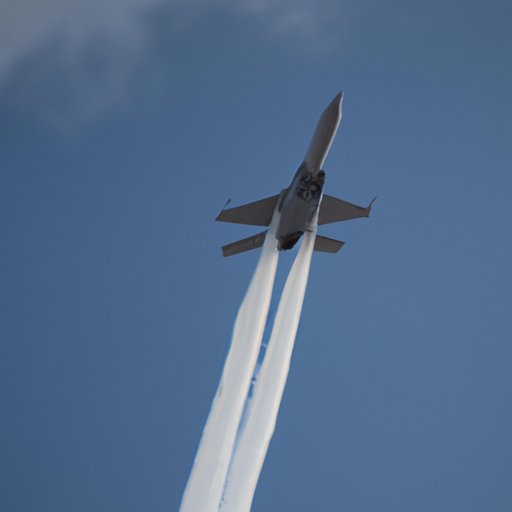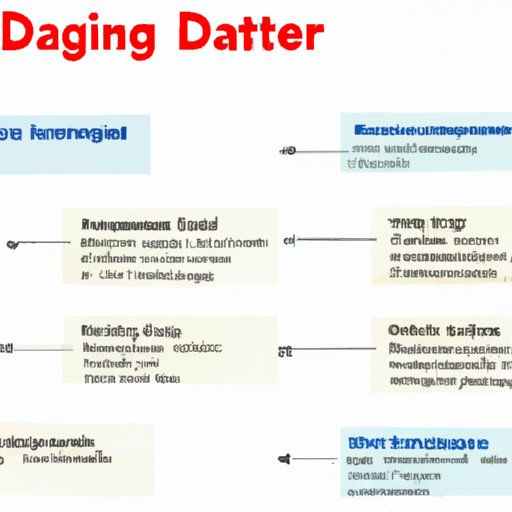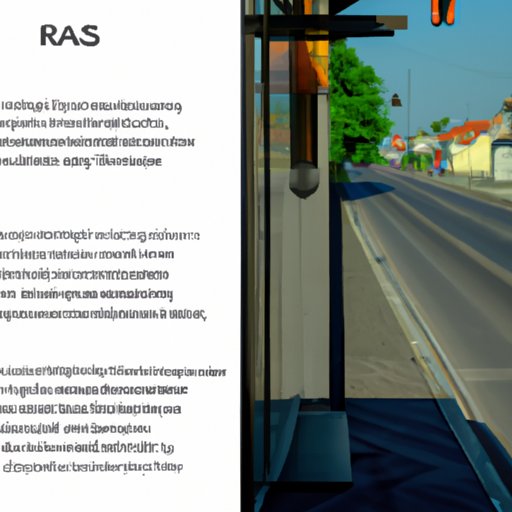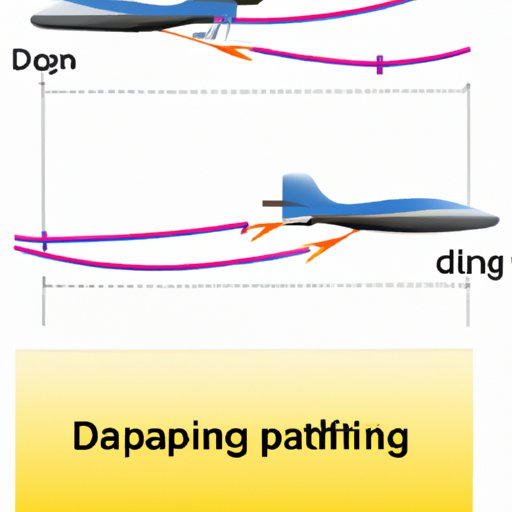Introduction
Drag is a force that resists motion. In the scientific community, drag refers to the force of air resistance acting on an object as it moves through the air or other fluid. Drag can be seen in everyday life, from the way objects move through water to the way a car moves down the road. It affects everything from the speed of aircraft to the trajectory of a baseball. By understanding drag, scientists are able to design more efficient aircraft, vehicles, and ships, as well as develop new technologies and strategies for reducing drag.
Exploring the Science Behind Drag and Its Effects on Aerodynamics
What is drag? Put simply, drag is the resistance to movement caused by the interaction between an object and the surrounding medium. This resistance is created by the turbulence of air or other fluids around the object. As the object moves, the air molecules are pushed aside, creating a wake behind the object. This wake creates a drag force, which acts against the object’s motion, slowing it down.
Types of drag include pressure drag, form drag, skin friction drag, lift-induced drag, profile drag, induced drag, parasite drag, and wave drag. Pressure drag is caused by the difference in pressure between the front and back of an object, while form drag occurs when an object changes shape as it moves through the air. Skin friction drag is the result of air molecules sticking to the surface of an object, while lift-induced drag is caused by the lift generated by the wings of an aircraft. Profile drag is the resistance created by the cross-sectional shape of an object, while induced drag is caused by the lift generated by the wings of an aircraft. Parasite drag is the resistance created by the various components attached to an object, such as antennas or landing gear, and wave drag is the resistance created by the shock waves generated by supersonic speeds.
The effects of drag on aerodynamics are significant. Drag reduces the efficiency of any moving object, as it requires additional energy to overcome. For example, the drag on an aircraft increases with speed, meaning that more fuel must be burned to maintain the same speed. Additionally, drag increases the amount of time it takes for an aircraft to reach its destination, as the speed at which it travels is reduced. Finally, drag affects the maneuverability of an aircraft, as the increased drag reduces the ability of the aircraft to turn quickly.

A Look at the Physics of Drag and How it Impacts Flight
Drag forces play an important role in both nature and technology. In nature, drag forces can be seen in the formation of tornadoes, the movement of rivers, and the behavior of ocean currents. In technology, drag forces are used to control the speed and maneuverability of aircraft, as well as to reduce the fuel consumption of vehicles. Understanding the physics of drag is essential for designing efficient aircraft, vehicles, and ships.
Sources of drag include the shape of an object, the size of an object, the speed of an object, and the materials used to construct an object. An object’s shape influences the amount of drag it experiences, as certain shapes create more drag than others. The size of an object also affects the amount of drag it experiences, as larger objects experience more drag than smaller objects. The speed of an object affects the amount of drag it experiences, as faster objects experience more drag than slower objects. Finally, the materials used to construct an object affect the amount of drag it experiences, as some materials are more resistant to drag than others.
The impact of drag on performance varies depending on the application. For aircraft, drag limits the speed at which they can travel, as the drag force increases with speed. Additionally, drag affects the maneuverability of an aircraft, as the increased drag reduces the ability of the aircraft to turn quickly. For vehicles, drag affects the fuel economy, as the drag force increases with speed. Finally, for ships, drag affects the speed and maneuverability, as the increased drag reduces the ability of the ship to turn quickly.

Examining the Different Types of Drag and Their Applications
Lift-induced drag occurs when an object generates lift, such as the wings of an aircraft. This type of drag is caused by the disruption of airflow caused by the lift created by the wings. This type of drag is most commonly seen in aircraft, as the wings generate lift to keep the aircraft in the air.
Profile drag is the resistance created by the cross-sectional shape of an object. This type of drag is most commonly seen in automobile design, as the shape of the car affects the amount of drag experienced. Profile drag is also seen in aircraft design, as the shape of the wings affects the amount of drag experienced.
Induced drag is caused by the lift generated by the wings of an aircraft. This type of drag is caused by the disruption of airflow caused by the lift created by the wings. This type of drag is most commonly seen in aircraft, as the wings generate lift to keep the aircraft in the air.
Parasite drag is the resistance created by the various components attached to an object, such as antennas or landing gear. This type of drag is most commonly seen in aircraft design, as the additional components increase the amount of drag experienced. Parasite drag can also be seen in automobiles, as the addition of spoilers, grills, and other components increases the amount of drag experienced.
Wave drag is the resistance created by the shock waves generated by supersonic speeds. This type of drag is most commonly seen in aircraft design, as the shock waves created by supersonic speeds increase the amount of drag experienced. Wave drag can also be seen in automobiles, as the shock waves created by high speeds increase the amount of drag experienced.

Understanding the Role of Drag in Everyday Life and Applications
Drag reduction strategies have been developed to reduce the amount of drag experienced by objects. These strategies include streamlining the shape of an object, using lighter materials, and using devices such as spoilers and diffusers. Streamlining the shape of an object reduces the amount of turbulence created, while using lighter materials reduces the weight of the object and thus the amount of drag experienced. Devices such as spoilers and diffusers direct the airflow around the object, reducing the amount of drag experienced.
Drag also plays an important role in everyday life. Drag is used to slow down objects, such as cars and boats, and to maintain the stability of structures, such as bridges and buildings. Additionally, drag is used to reduce the amount of fuel consumed by vehicles, as well as to improve the maneuverability of aircraft. Finally, drag is used to control the speed and direction of wind turbines, as well as to reduce the noise produced by engines and exhaust systems.
Conclusion
In conclusion, drag is a force that resists motion, and it can be seen in everyday life, from the way objects move through water to the way a car moves down the road. The science behind drag and its effects on aerodynamics, the physics of drag and how it impacts flight, the different types of drag and their applications, and the role of drag in everyday life and applications have all been explored. Drag reduction strategies have been developed to reduce the amount of drag experienced by objects, and drag plays an important role in everyday life, from slowing down objects to improving the maneuverability of aircraft.
By understanding drag, scientists are able to design more efficient aircraft, vehicles, and ships, as well as develop new technologies and strategies for reducing drag. Through this exploration, the importance of drag in everyday life and applications has become clear, and it is clear that the study of drag will continue to be important in the years to come.
(Note: Is this article not meeting your expectations? Do you have knowledge or insights to share? Unlock new opportunities and expand your reach by joining our authors team. Click Registration to join us and share your expertise with our readers.)
